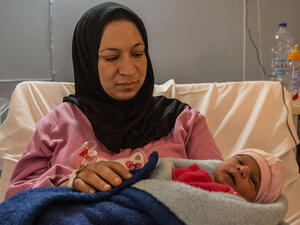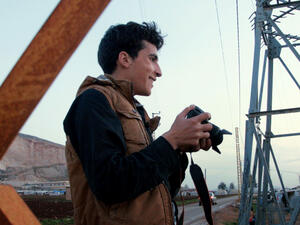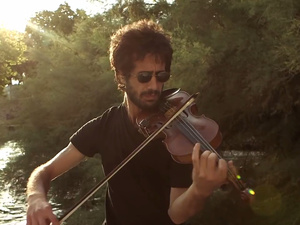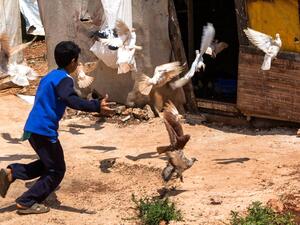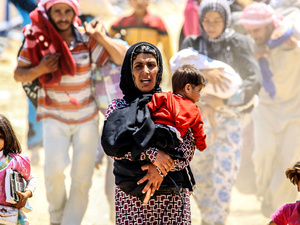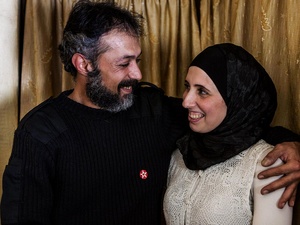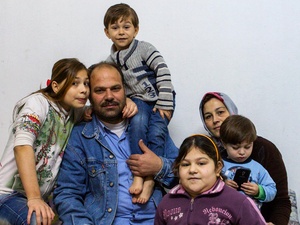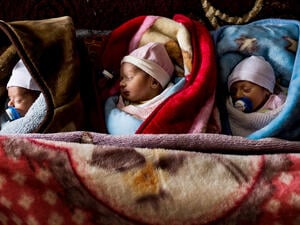UNHCR supplies start to reach shattered Lebanese villages
UNHCR supplies start to reach shattered Lebanese villages
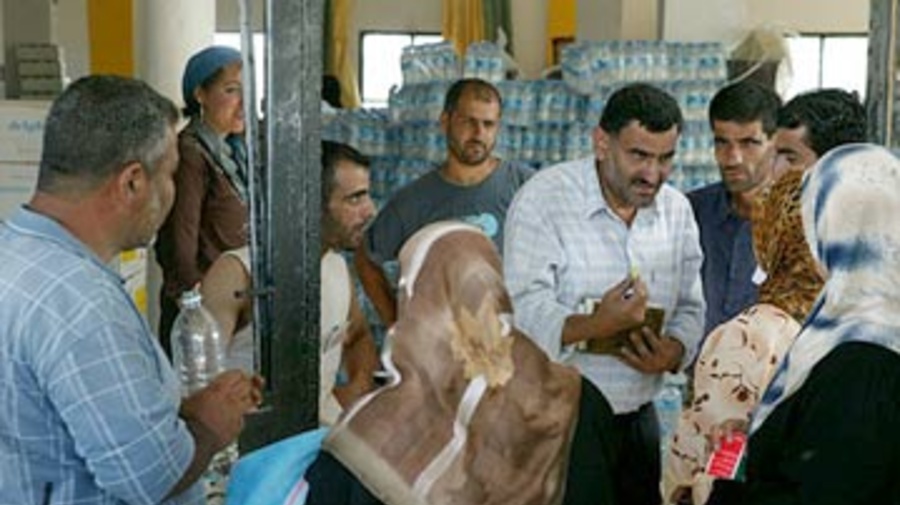
A UNHCR distribution in Ayta As Shab, near the Israeli border.
TYRE, Lebanon, August 23 (UNHCR) - As the extent of the damage is becoming clear, UNHCR emergency assistance is starting to arrive for the Lebanese trying to rebuild their shattered villages.
Tents, blankets and mattresses have already been distributed in one of the most damaged villages, Ayta As Shab, near the Israeli border. On Thursday, UNHCR plans to continue distributions in another destroyed town, Siddiqin. Further north in Lebanon, other UNHCR teams will be distributing aid in the Nabatiyah area.
More than a week after the ceasefire began and with an estimated 90 percent of displaced Lebanese now back home, a more complete picture of the destruction in the south of Lebanon has emerged. UNHCR teams have largely switched from monitoring displaced Lebanese to assessing the needs of those trying to rebuild their homes and lives after the month of conflict between Israel and Lebanon.
"In a matter of a few days, we have managed to determine the immediate needs of some 30 most affected villages in the area," said Andrew Duggin, UNHCR's engineer in the southern city of Tyre.
"These villagers have suffered severe destruction - some say, worse than seen in Bosnia - and will as a first priority be targeted for immediate assistance. The whole south is, however, severely handicapped because of a lack of electricity and water, the destruction of infrastructure and the presence of cluster bombs."
UNHCR staff, including two engineers, have made assessment missions in the south with other United Nations agencies. UNHCR is also working closely with the UN Mine Action Coordination Centre (UNMACC) in Tyre, which over the years has gained in-depth knowledge of the population, needs and problems in the south. The landscape is littered with unexploded ordnance (UXO).
UNHCR has established a base in Tyre and started its Beirut-Tyre pipeline by trucking in 240 kitchen sets, 1,250 tents, 4,125 blankets, 1,000 plastic sheets, 27,600 diapers and 720 pieces of soap. The operation in Tyre is set to expand sharply this week, with the arrival of a UNHCR fleet of trucks to take supplies into the villages and the assembly of large warehouse tents needed to hold the increasing flow of emergency material.
In addition, UNHCR is purchasing material for 15,000 tool kits - plastic sheeting, plywood, hammers, nails - for residents to carry out repairs. Kits to repair more substantial damage, which will include cement blocks, will be provided later.
Extra supplies continue to flow into Lebanon, with four flights - three from the Belgian Air Force and one from the German Air Force - bringing supplies from Amman to Beirut. Much of this material will then be moved to the forward locations of Tyre or Sidon, nearer the areas of greatest need.
The greatest damage was suffered by towns just north of the Israeli border. Markabe, a town of 3,000 visited by a UNHCR assessment team, used to be a picturesque magnet for Beirut families in summer.
"In the summer, this town houses over 10,000 people," said Jihad Hammoud, head of the municipality. "Many people from Beirut have second homes and come to the mountains to escape the summer heat in the city. It will take a while before this will happen again."
Sitting beside rubble, Hammoud looked tired, but unbeaten. His town was badly hit. Fifty percent of houses have been destroyed, the other half severely damaged. Electricity is down, the four main concrete water tanks destroyed, most of the infrastructure gone. The town is littered with unexploded bombs, there is no food, and security remains highly unstable.
In addition to aid brought into the region from Tyre, UNHCR is hiring private trucks in Beirut and loading them with relief goods to be delivered directly to Markabe and possibly some other villages.
Despite the destruction, Hammoud is thinking ahead. His town needs all the help it can get, but it will be rebuilt, he said. "Some 1,500 of the core population of 3,000 in Markabe have come back. We will stay, even though we have little."
In Kfar Kelaa, a Shia town closer to the Israeli border, only 150 families stayed through the conflict but the majority of the original population of 13,000 has now returned. While damage was relatively light, there is no electricity, limited water supplies, an urgent need for medicine and major security concerns.
"UXO and cluster bombs have landed all over town, and so far no demining agency nor the Lebanese army have come here," said Moussa Chit, head of the municipality. "Moreover, the general security situation is bad because of ongoing violations of the ceasefire." Israeli troops are nearby.
By Astrid van Genderen Stort in Tyre, Lebanon


